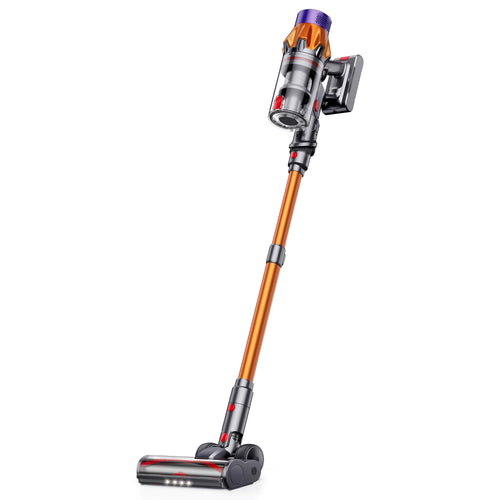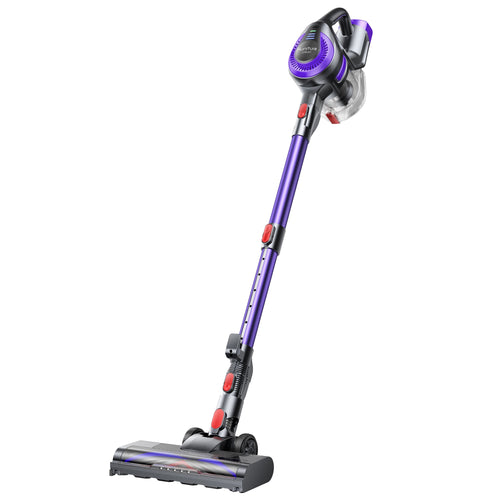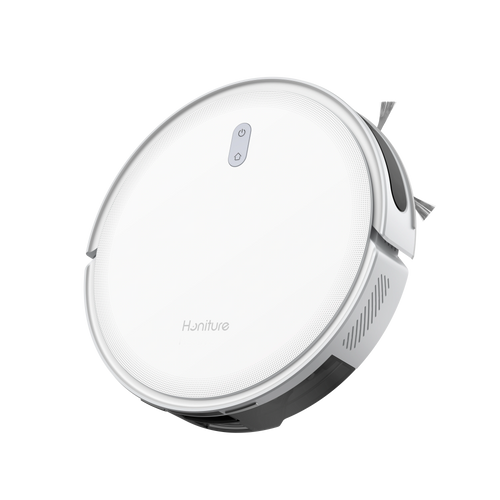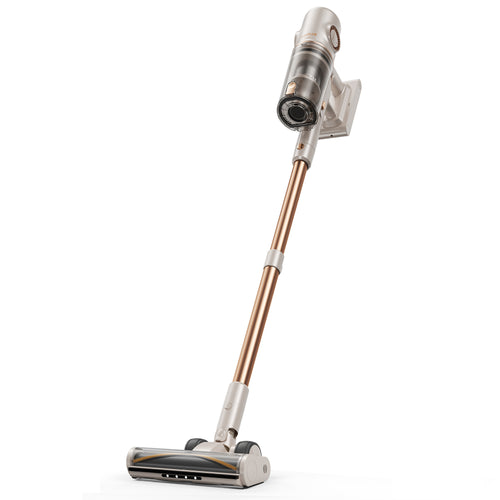When it comes to carpets, we’re all pretty familiar with them. In fact, their use dates back over 3,000 years, with carpets being found in ancient kingdoms. Today’s carpets are designed with so many style and most of carpets feature with tightly woven, breathable structures that not only absorb sound but also effectively block it—giving them excellent soundproofing properties. Walking on a carpet provides a level of comfort that no other flooring material can match.
Carpets serve many purposes: from decoration and insulation to moisture resistance, soundproofing, and even creating a cozy space to relax and play. For families, especially those with kids, carpets offer a sense of security, comfort, and fun. Carpets truly are an essential part of the home. But with all this comfort comes the challenge of keeping them clean and looking their best sometime we all know can be tricky.
While we all love how carpets enhance our home’s atmosphere, the thought of cleaning them can feel like a daunting task. But with just a few simple tricks for regular upkeep, you can keep your carpets looking fresh and tidy without the hassle. Keep reading to discover some easy cleaning tips that will help you enjoy the cozy charm of your carpets, without the stress of constant maintenance.
Cleaning Different Types of Household Carpets:
Carpet Materials:
There are many different types of carpets, but the fibers used primarily fall into two categories: natural fibers and synthetic fibers. Natural fibers include materials like wool, cotton, hemp, coir, and suede—basically, anything sourced from nature. Synthetic fibers include nylon, polypropylene, polyester, and others.
Carpets made from different materials each have their own pros and cons. For example, wool carpets are known for their moisture-wicking properties, insulation, and anti-static benefits. However, they tend to be less durable, can shrink when wet, and are more susceptible to microbial damage. On the other hand, synthetic fiber carpets are highly durable, resistant to wear and tear, and less prone to chemical or microbial damage, but they tend to generate more static. To strike a balance, many carpets in the market today are made from blended fibers, combining the best qualities of both natural and synthetic materials for a better overall experience.
Types of Carpets:
Carpets made from different materials are generally categorized into seven common types: pure wool carpets, cotton carpets, blended fiber carpets, synthetic fiber carpets, woven grass carpets, rag rugs, and silk carpets. Each type has unique characteristics that affect both comfort and cleaning methods.
Blended fiber carpets, made from a combination of wool and synthetic fibers, are resistant to corrosion and washing, making them safe to clean with water. Likewise, synthetic fiber carpets, plastic carpets, and grass woven carpets can all be safely cleaned with water to remove surface stains. However, carpets made primarily from animal fibers, like wool, can be damaged by water washing, potentially affecting both their appearance and longevity. Therefore, when cleaning your carpet, it's important to consider the material and choose the appropriate cleaning method for the best results.
Daily Carpet Cleaning Steps for Home Use
1. Vacuuming
The first step in carpet maintenance is to vacuum the surface to remove dust, hair, and small debris. It’s important to choose the right attachment for different areas of your carpet. For large, flat sections, a wide-mouth nozzle works best for quick cleaning, while a crevice tool is ideal for reaching corners and edges, where dust tends to hide.
For dry debris like dust and hair, start by vacuuming thoroughly. Use a high-powered vacuum cleaner and move slowly and evenly across the carpet from one end to the other, making sure every corner gets covered. For stubborn particles that are difficult to pick up, gently sweep them with a broom to loosen them before vacuuming. It's important to get a good vacuum for carpet cleaning.
Vacuuming Frequency:
Regular vacuuming is crucial to keep your carpet clean. Aim to vacuum at least 1-2 times a week to quickly remove dust and debris from the surface, preventing stains and dirt buildup.
2. Spot Cleaning Stains
For small, localized stains like spilled drinks or food crumbs, start by blotting up the excess liquid with a clean white towel or paper towel. Try to absorb as much of the liquid as possible to prevent the stain from spreading. After that, choose an appropriate cleaner based on the type of stain.
- For water-based stains (such as coffee or juice), mix a small amount of mild detergent with warm water (about 1-2 tablespoons of dish soap per 1 liter of water). Dampen the towel with the solution and gently blot the stained area.
- For oil-based stains (such as grease or lipstick), use a specialized carpet stain remover designed for grease. Follow the instructions provided on the product for best results.
After using the cleaner, take a clean, damp towel to wipe away any detergent residue. Finally, blot the area with a dry towel to absorb excess moisture, helping the carpet dry as quickly as possible.
3. Deep Cleaning
3.1. Gather Cleaning Supplies and Tools
For deep cleaning, you will need a carpet cleaner (powder, liquid, or foam), a large bucket, a soft-bristle brush, a carpet cleaning machine (or you can clean by hand, but it will require more effort), plenty of clean towels, and a fan to speed up the drying process.
3.2. Pre-Spray Carpet Cleaner
If your carpet is heavily soiled, dilute the carpet cleaner according to the instructions and fill a spray bottle with the solution. Spray the cleaner evenly over the carpet's surface and let it sit for 10–15 minutes. This will help break down deep-set stains and dirt.
However, be careful not to oversaturate the carpet, as excessive moisture can seep into the carpet's backing and cause damage.
4. Cleaning the Carpet
If using a carpet cleaning machine, follow the manufacturer's instructions. Fill the machine's water tank with the appropriate amount of cleaner and water. Start from one corner, and slowly push the machine forward, allowing its brushes to penetrate the carpet fibers and clean thoroughly.
The machine's brushes are effective at removing stains and dirt embedded deep within the fibers. If cleaning by hand, pour the diluted cleaner into a large bucket. Dip a soft-bristle brush into the cleaning solution and gently scrub small sections of the carpet (about 1 square meter at a time), starting from one end of the carpet.
Always brush in the direction of the carpet fibers to avoid damaging them. After brushing, use a clean, damp towel to blot up any excess cleaning solution.
5. Rinsing the Carpet
Rinse the carpet with clean water to remove any remaining cleaning solution. If using a carpet cleaning machine, refill the water tank with clean water and perform another round of rinsing. If cleaning by hand, repeatedly wipe the carpet with clean water and towels until the water you wring out is free of soap suds.
6. Drying the Carpet
Once the carpet has been cleaned, make sure to dry it thoroughly in a well-ventilated area to avoid any lingering moisture, which could lead to mold growth. After cleaning, use clean, absorbent towels or paper to blot as much water as possible to speed up the drying process. Avoid walking on the carpet until it is completely dry to prevent further dirt from being tracked onto it or to prevent distortion of the fibers.
Always test the cleaner in a small, hidden area of the carpet before full application to ensure that it won’t damage the color or material.
More Carpet Cleaning Methods
1. Dry Foam Cleaning – A Great Method That Doesn’t Require Water Rinsing:
This method is especially suitable for cleaning pure wool carpets. The equipment needed includes a single-disc floor machine with a carpet brush and foamer, a carpet comb, and a vacuum cleaner. The cleaning agent to be used is a high-foam carpet cleaner.
Steps for Dry Foam Cleaning:
- First, use a vacuum cleaner to thoroughly vacuum the carpet and remove surface dust.
- Then, apply the carpet foam cleaner for dry foam brushing. Pay special attention to the carpet edges and corners, which should be cleaned carefully by hand.
- After several rounds of dry foam brushing, use a carpet comb or similar tool to brush the carpet fibers, maintaining the carpet's appearance.
- Finally, vacuum up the dirt and foam crystals, and let the carpet air dry naturally.
2. Natural Cleaning Methods – Great for Those Who Prefer Not to Use Chemical Cleaners
- Lemon Juice:
Lemon juice has natural bleaching and stain-removal properties. For stains on light-colored carpets, such as coffee or juice stains, apply a few drops of lemon juice to the stain. Let it sit for a few minutes, then wipe it with a damp cloth to effectively lighten the stain.
- Baking Soda:
Baking soda is a versatile cleaner, great for removing odors and light stains on carpets. Evenly sprinkle baking soda over the carpet, let it sit for 1–2 hours, and then vacuum it up. This will help eliminate odors and make your carpet fluffier.
What Makes a Good Vacuum for Carpet?
Since the first and most important step is that we need to regularly vacuum to maintain the carpet, when choosing a good vacuum for carpet you’ll want a model that delivers strong suction power. Here are a few features I'd recommend looking for:
1.High Suction Power: Carpets can trap debris deep within the fibers. Look for a handheld vacuum with strong suction to make sure you’re getting everything.
2. Motorized Brushes: Many vacuum cleaner design for carpet come with motorized brush attachments. These brushes agitate the carpet fibers, loosening dirt and debris so it can be sucked up more efficiently.
3. Lightweight Design: You’ll want a vacuum cleaner that’s easy to maneuver around without feeling too heavy. A lightweight vacuum cleaner is easier to use on both carpet and upholstery.
Is a Cordless Vacuum the Best Vacuum Cleaner for Carpets?
A cordless vacuum is an excellent choice for light to medium cleaning, especially with in homes with smaller areas, pets, and for quick touch-ups. However, for deep cleaning of large carpeted spaces or high-pile carpets, a corded vacuum may still be the better option due to its superior suction power and larger dustbin capacity.
If you're looking for the best of both worlds, you might want to consider a cordless vacuum with strong suction and a longer battery life, or even a hybrid model that works well for both carpets and other surfaces. If you're looking to purchase a vacuum cleaner, consider the Honiture cordless stick vacuum as an affordable option.
What type of carpet do you have, and what’s your main concern (e.g., pet hair, deep cleaning)?
We will continue to update with more tips on maintaining and cleaning wooden floors. Stay tuned and subscribe to us for more!
































